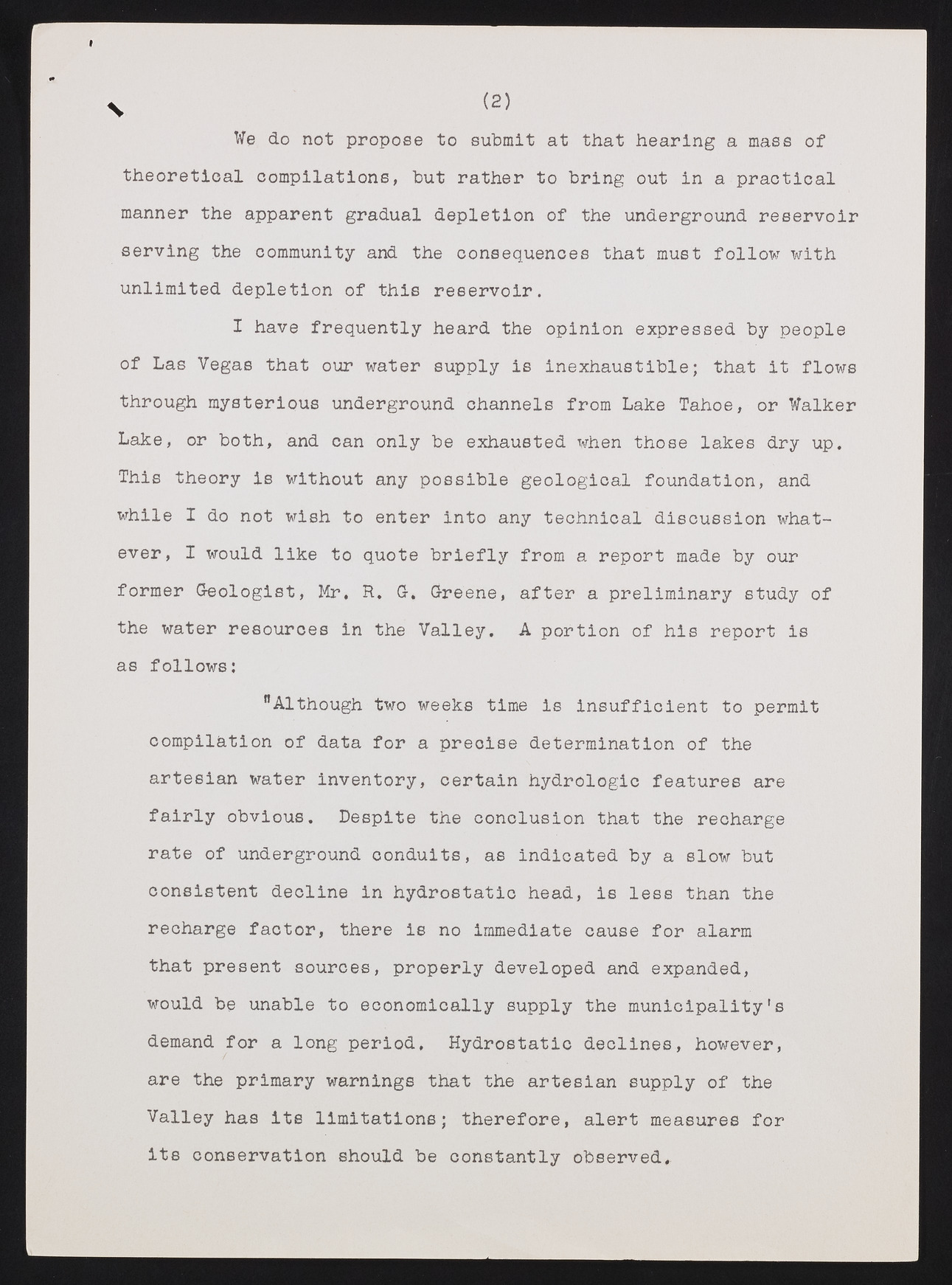Copyright & Fair-use Agreement
UNLV Special Collections provides copies of materials to facilitate private study, scholarship, or research. Material not in the public domain may be used according to fair use of copyrighted materials as defined by copyright law. Please cite us.
Please note that UNLV may not own the copyright to these materials and cannot provide permission to publish or distribute materials when UNLV is not the copyright holder. The user is solely responsible for determining the copyright status of materials and obtaining permission to use material from the copyright holder and for determining whether any permissions relating to any other rights are necessary for the intended use, and for obtaining all required permissions beyond that allowed by fair use.
Read more about our reproduction and use policy.
I agree.Information
Digital ID
Permalink
Details
More Info
Rights
Digital Provenance
Publisher
Transcription
I K (2) We do not propose to submit at that hearing a mass of theoretical compilations, but rather to bring out in a practical manner the apparent gradual depletion of the underground reservoir serving the community and the consequences that must follow with unlimited depletion of this reservoir. I have frequently heard the opinion expressed by people of Las Vegas that our water supply is inexhaustible; that it flows through mysterious underground channels from Lake Tahoe, or Walker Lake, or both, and can only be exhausted when those lakes dry up. This theory is without any possible geological foundation, and while I do not wish to enter into any technical discussion whatever, I would like to quote briefly from a report made by our former Geologist, Mr, R. G, Greene, after a preliminary study of the water resources in the Valley. A portion of his report is as follows: "Although two weeks time is insufficient to permit compilation of data for a precise determination of the artesian water inventory, certain hydrologic features are fairly obvious. Despite the conclusion that the recharge rate of underground conduits, as indicated by a slow but consistent decline in hydrostatic head, is less than the recharge factor, there is no immediate cause for alarm that present sources, properly developed and expanded, would be unable to economically supply the municipality's demand for a long period. Hydrostatic declines, however, are the primary warnings that the artesian supply of the Valley has its limitations; therefore, alert measures for its conservation should be constantly observed.

